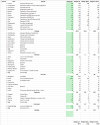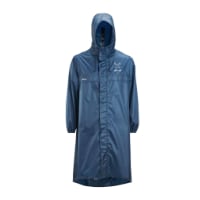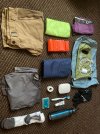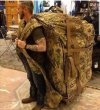Damn... thats a lot of less-than-helpful replies from some veterans here... i have to say that i am a bit disappointed.
So lets try to get some things in order and try to answer the question
(or at least point you in some kind of helpful direction):
1. Get familiar with the concept of diminishing returns. Going from a 7kg pack to a 5kg pack will make more difference than going from 5kg to 3kg. I explicitly chose to pack more things for added comfort and came out at 3.6kg and might even add more things and get closer to 4kg for my next camino. (link of 3.6kg list in signature, i'll post a screenshot of a how an example of ~2,5kg list would look at the end of the post. Feel free to compare)
2. Usually pack weight is measured in "base weight" to get some kind of means of comparison. I calculate my base weight as a worst case scenario, meaning that i calculate the bare minimum as worn weight and the maximum as weight in my pack. In practice you'll likely wear more so your pack will be even lighter than calculated.
3. Usually base weight is without consumables (like water, snacks and food), again for making things easier to compare. So usually, since going without consumeables is a bit stupid, that will make your pack in practice heavier. The lighter the baseweight the more difference the same amount of consumables will make.
4. Usually (using this word a lot) to get down to that kind of weights you'll use a frameless pack. Those get their rigidity from being properly filled. A pack to empty will not carry well. This is important! Get your other stuff first, find out how much volume that is, then buy a pack. (or figure out a way to compensate volume, like compression cords or in my case a EVA matress). A properly packed frameless backpack will easily carry 6kg or more in total weight (gear+consumables).
5. Now do your research. Unless you are extremely lucky to have a dedicated ultralight outfitter close to you, your source of information will be the internet. There is no single-one-fits-all list of stuff to buy. You have to figure out what is important for you and what you can do without.
6. Be aware that getting down to pack weights like 3kg is combination of 3 things: a) packing smart (investment=time) b) expensive stuff (investment=money) c) packing little (investment=comfort). Up to some point you can trade between those factors.
Feel free to ask more questions, but to be honest, i'd appreciate it if you did some more research into ultralight packing first and be a bit more specific in your follow up.
View attachment 162597































